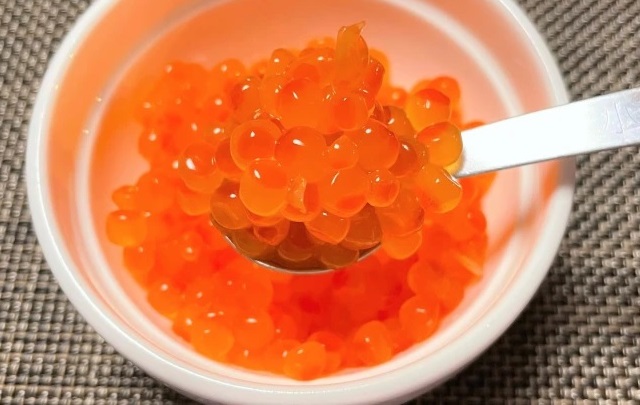
Is substitute salmon roe the budget-friendly food we’ve been hoping for?
Ikura (salmon roe) isn’t cheap, as anyone who’s ever looked at the menu at a sushi restaurant knows, and since even a bite-sized morsel is pricy, that makes a full-on ikura-don, an entire rice bowl topped with ikura, a special-occasion luxury.
Because of this, our Japanese-language reporter K. Masami sometime finds herself in situations where her stomach is saying “Gimme some ikura!”, but her wallet is saying “Nope.” But maybe there’s a way for Masami to please her palate without busting her budget, in the form of Hobo Ikura, or “Almost Ikura.”
Hobo Ikura is a new offering from Kobe-based food company Kanetetsu, and by its own admission, no, Hobo Ikura is not ikura. Kanetetsu promises it’s close, though. Made of vegetable fats and dextrin starch, Hobo Ikura is seasoned with salmon extract, mirin (cooking sake) and soy sauce to look and taste like actual ikura, Kanetetsu promises.
Why go to the trouble of making imitation ikura? Well, for starters, Hobo Ikura is lower in cholesterol and purines than ikura (regular ikura is eggs, after all). Then there’s the price difference. The 50-gram (1.8-ounce) pouch of Hobo Ikura Masami bought for this taste test cost 480 yen (US$3.60). The 60-gram pouch of ikura she picked up at the grocery store to compare it against? 1,078 yen. That works out to 9.6 yen per gram for Hobo Ikura compared to just under 18 yen per gram for ikura, making Kanetetsu’s facsimile roughly half the price.
▼ Hobo Ikura
Masami started off with a visual inspection, and was amazed by how close Hobo Ikura looks to the real thing. Honestly, if she were seeing it for the first time and it was already out of its packaging, she wouldn’t be able to tell it’s imitation roe. As proof, here’s a side-by-side comparison. Can you tell which is Hobo Ikura and which is ikura?
The real ikura is the bowl and the left, and Hobo Ikura is on the right. The only difference Masami could spot was that the real ikura was maybe a little more transparent, but that could just be the specific pack that she got.
▼ Real ikura
▼ Hobo Ikura
Masami was in for a surprise, though, when she tasted both, because the difference in flavor was bigger than the one in appearance. The Hobo Ikura has a more pronounced fish flavor and gelatin-like texture than the milder ikura, which also has more of a firmness-giving-way-to-a-pop consistency.
So is Hobo Ikura a failure then? Not at all. It’s still tasty, and there’s a way to make it even better while closing the gap between actual salmon roe: put it on a bowl of warm white rice.
As the heat transferred from the rice to the Hobo Ikura, it improved both the texture and the flavor, making both closer to ikura. Now not only did they look almost exactly the same, they tasted almost exactly the same too, and Masami isn’t sure she’d have been able to tell which was which anymore if she hadn’t put the ikura/Hobo Ikura bowl together herself.
▼ Left: real ikura
Right: Hobo Ikura
So when ikura isn’t in the budget, “almost ikura” is close enough for Masami.
Photos © SoraNews24
● Want to hear about SoraNews24’s latest articles as soon as they’re published? Follow us on Facebook and Twitter!
[ Read in Japanese ]

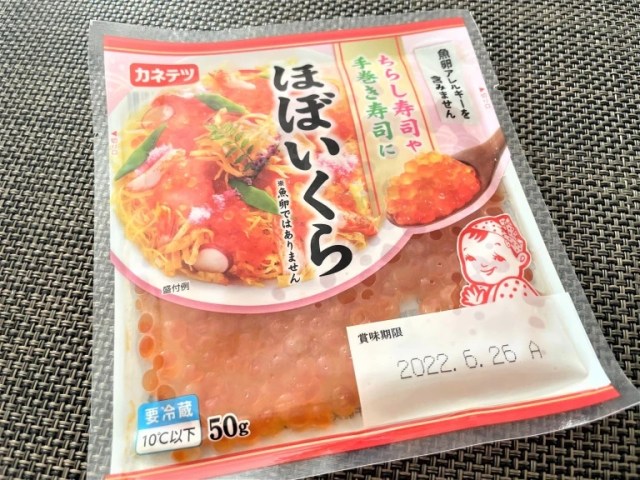
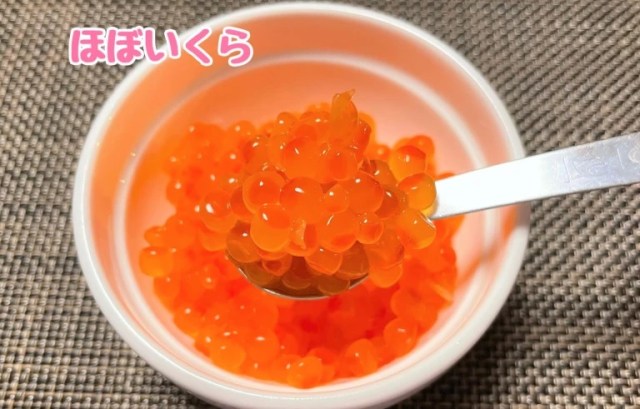
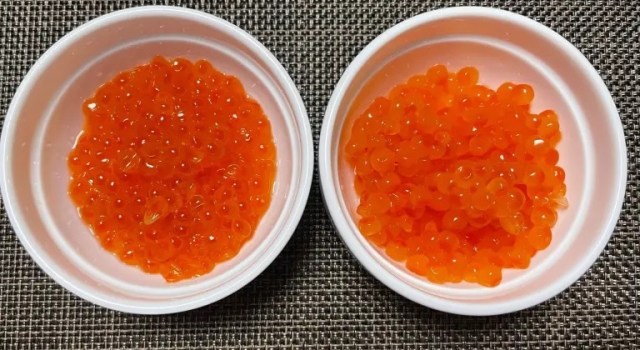
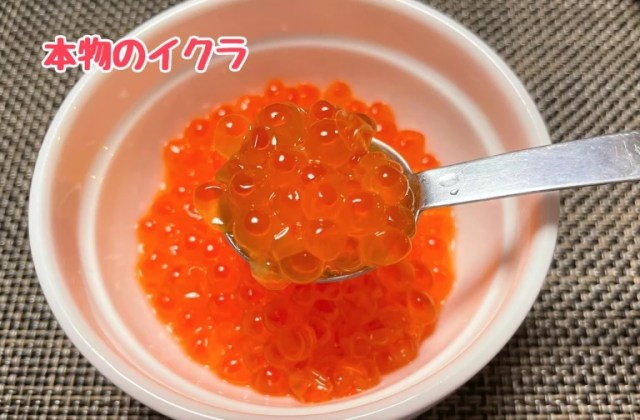
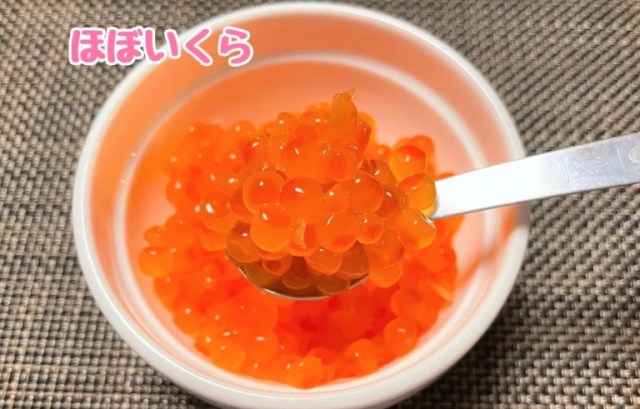
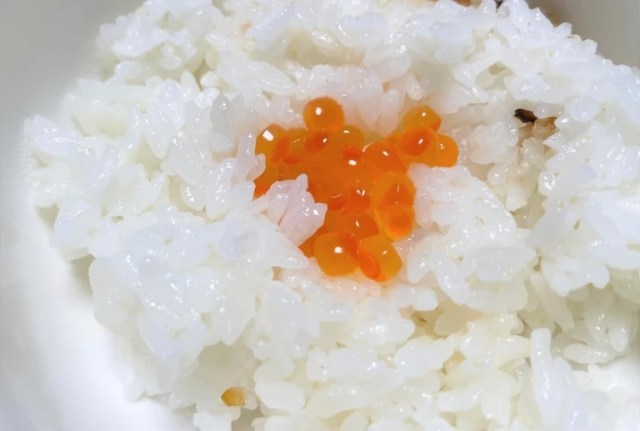

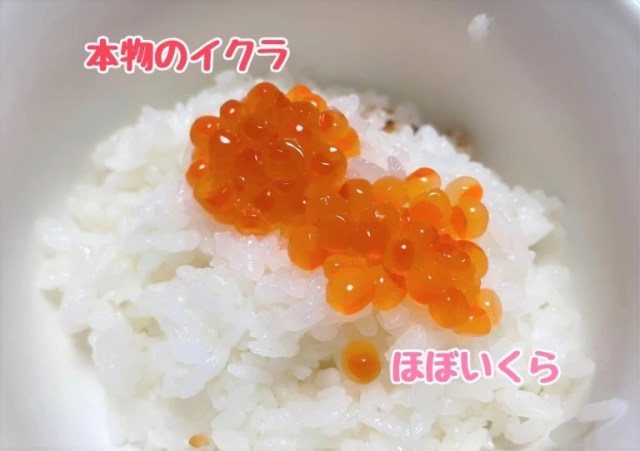
 Imitation crab meat shrine built in Kobe
Imitation crab meat shrine built in Kobe We ate a pickled tapioca bubble rice bowl and it was un-bowl-lievable
We ate a pickled tapioca bubble rice bowl and it was un-bowl-lievable What’s for dinner? A US$113/3.3-pound sushi bowl from one of Japan’s favorite cheap restaurants
What’s for dinner? A US$113/3.3-pound sushi bowl from one of Japan’s favorite cheap restaurants Here’s the reason why your expensive ikura sushi often comes with some cheap cucumber slices
Here’s the reason why your expensive ikura sushi often comes with some cheap cucumber slices Japanese convenience store showdown – Who’s got the best ikura rice balls?【Taste test】
Japanese convenience store showdown – Who’s got the best ikura rice balls?【Taste test】 Foreigner’s request for help in Tokyo makes us sad for the state of society
Foreigner’s request for help in Tokyo makes us sad for the state of society Japanese city loses residents’ personal data, which was on paper being transported on a windy day
Japanese city loses residents’ personal data, which was on paper being transported on a windy day Seaside scenery, history, and so many desserts on Yokohama’s Akai Kutsu【Japan Loop Buses】
Seaside scenery, history, and so many desserts on Yokohama’s Akai Kutsu【Japan Loop Buses】 Should you add tartar sauce to Japanese curry rice? CoCo Ichi makes diners an unusual offer
Should you add tartar sauce to Japanese curry rice? CoCo Ichi makes diners an unusual offer Akihabara pop-up shop sells goods made by Japanese prison inmates
Akihabara pop-up shop sells goods made by Japanese prison inmates Osaka governor suggests lowering voting age to 0 to curb population decline
Osaka governor suggests lowering voting age to 0 to curb population decline Harajuku Station’s beautiful old wooden building is set to return, with a new complex around it
Harajuku Station’s beautiful old wooden building is set to return, with a new complex around it Suntory x Super Mario collaboration creates a clever way to transform into Mario【Videos】
Suntory x Super Mario collaboration creates a clever way to transform into Mario【Videos】 Toll fees officially added to Mt. Fuji hiking trail
Toll fees officially added to Mt. Fuji hiking trail Japanese company uses “crow language” to keep them away from garbage 【Video】
Japanese company uses “crow language” to keep them away from garbage 【Video】 McDonald’s new Happy Meals offer up cute and practical Sanrio lifestyle goods
McDonald’s new Happy Meals offer up cute and practical Sanrio lifestyle goods Japanese ramen restaurants under pressure from new yen banknotes
Japanese ramen restaurants under pressure from new yen banknotes French Fries Bread in Tokyo’s Shibuya becomes a hit on social media
French Fries Bread in Tokyo’s Shibuya becomes a hit on social media Studio Ghibli releases new action figures featuring Nausicaä of the Valley of the Wind characters
Studio Ghibli releases new action figures featuring Nausicaä of the Valley of the Wind characters Red light district sushi restaurant in Tokyo shows us just how wrong we were about it
Red light district sushi restaurant in Tokyo shows us just how wrong we were about it New private rooms on Tokaido Shinkansen change the way we travel from Tokyo to Kyoto
New private rooms on Tokaido Shinkansen change the way we travel from Tokyo to Kyoto Tokyo Tsukiji fish market site to be redeveloped with 50,000-seat stadium, hotel, shopping center
Tokyo Tsukiji fish market site to be redeveloped with 50,000-seat stadium, hotel, shopping center Beautiful Ghibli sealing wax kits let you create accessories and elegant letter decorations【Pics】
Beautiful Ghibli sealing wax kits let you create accessories and elegant letter decorations【Pics】 Studio Ghibli releases Kiki’s Delivery Service chocolate cake pouches in Japan
Studio Ghibli releases Kiki’s Delivery Service chocolate cake pouches in Japan New definition of “Japanese whiskey” goes into effect to prevent fakes from fooling overseas buyers
New definition of “Japanese whiskey” goes into effect to prevent fakes from fooling overseas buyers Our Japanese reporter visits Costco in the U.S., finds super American and very Japanese things
Our Japanese reporter visits Costco in the U.S., finds super American and very Japanese things All-you-can-drink Starbucks and amazing views part of Tokyo’s new 170 meter-high sky lounge
All-you-can-drink Starbucks and amazing views part of Tokyo’s new 170 meter-high sky lounge More foreign tourists than ever before in history visited Japan last month
More foreign tourists than ever before in history visited Japan last month New Pokémon cakes let you eat your way through Pikachu and all the Eevee evolutions
New Pokémon cakes let you eat your way through Pikachu and all the Eevee evolutions Disney princesses get official manga makeovers for Manga Princess Cafe opening in Tokyo
Disney princesses get official manga makeovers for Manga Princess Cafe opening in Tokyo Sales of Japan’s most convenient train ticket/shopping payment cards suspended indefinitely
Sales of Japan’s most convenient train ticket/shopping payment cards suspended indefinitely Sold-out Studio Ghibli desktop humidifiers are back so Totoro can help you through the dry season
Sold-out Studio Ghibli desktop humidifiers are back so Totoro can help you through the dry season Japanese government to make first change to romanization spelling rules since the 1950s
Japanese government to make first change to romanization spelling rules since the 1950s Ghibli founders Toshio Suzuki and Hayao Miyazaki contribute to Japanese whisky Totoro label design
Ghibli founders Toshio Suzuki and Hayao Miyazaki contribute to Japanese whisky Totoro label design Doraemon found buried at sea as scene from 1993 anime becomes real life【Photos】
Doraemon found buried at sea as scene from 1993 anime becomes real life【Photos】 Tokyo’s most famous Starbucks is closed
Tokyo’s most famous Starbucks is closed One Piece characters’ nationalities revealed, but fans have mixed opinions
One Piece characters’ nationalities revealed, but fans have mixed opinions We asked a Uniqlo employee what four things we should buy and their suggestions didn’t disappoint
We asked a Uniqlo employee what four things we should buy and their suggestions didn’t disappoint Princesses, fruits, and blacksmiths: Study reveals the 30 most unusual family names in Japan
Princesses, fruits, and blacksmiths: Study reveals the 30 most unusual family names in Japan Japan super budget dining – What’s the best way to spend 1,000 yen at sushi restaurant Sushiro?
Japan super budget dining – What’s the best way to spend 1,000 yen at sushi restaurant Sushiro? Who’s got the best, cheapest one-person sushi delivery in downtown Tokyo? Mr. Sato investigates!
Who’s got the best, cheapest one-person sushi delivery in downtown Tokyo? Mr. Sato investigates! Salmon katsudon? Tokyo restaurant’s specialty is like a deep-fried sashimi lunch【Photos】
Salmon katsudon? Tokyo restaurant’s specialty is like a deep-fried sashimi lunch【Photos】 Here’s what a 10,000-yen Sushi Cake from Japan looks like
Here’s what a 10,000-yen Sushi Cake from Japan looks like Evidence of world’s tiniest cat? Pawprint found in ikura
Evidence of world’s tiniest cat? Pawprint found in ikura Japan’s sushi that’s actually cake fools the eyes, blows the mind, pleases the stomach【Photos】
Japan’s sushi that’s actually cake fools the eyes, blows the mind, pleases the stomach【Photos】 Beef and sashimi in the same rice bowl: Brilliance or blasphemy? We find out【Taste test】
Beef and sashimi in the same rice bowl: Brilliance or blasphemy? We find out【Taste test】 Which Japanese conveyor belt sushi chain has the best salmon sushi?【Taste test】
Which Japanese conveyor belt sushi chain has the best salmon sushi?【Taste test】 Survey ranks convenience store rice balls – salmon, sea-dwelling poultry & plants steal the show
Survey ranks convenience store rice balls – salmon, sea-dwelling poultry & plants steal the show Which Japanese conveyor belt sushi chain has the best bintoro sushi?【Taste test】
Which Japanese conveyor belt sushi chain has the best bintoro sushi?【Taste test】 Tsukiji alternative – Tokyo has a second fish market, and it turns out it’s awesome too
Tsukiji alternative – Tokyo has a second fish market, and it turns out it’s awesome too These beautiful pieces of sushi aren’t actually sushi
These beautiful pieces of sushi aren’t actually sushi We sample the Super Cup 1.5 times x Yoasobi collaboration cup ramen that’s now on sale
We sample the Super Cup 1.5 times x Yoasobi collaboration cup ramen that’s now on sale Japan’s top 10 hotel breakfasts 2016: Kobe hotel tops the list once again!
Japan’s top 10 hotel breakfasts 2016: Kobe hotel tops the list once again! Tokyo’s super-secret-location sushi restaurant has a stand-up sister shop that’s open to all
Tokyo’s super-secret-location sushi restaurant has a stand-up sister shop that’s open to all Salamander soup?!? We try “giant salamander rice with green tea” in Kyoto
Salamander soup?!? We try “giant salamander rice with green tea” in Kyoto
Leave a Reply